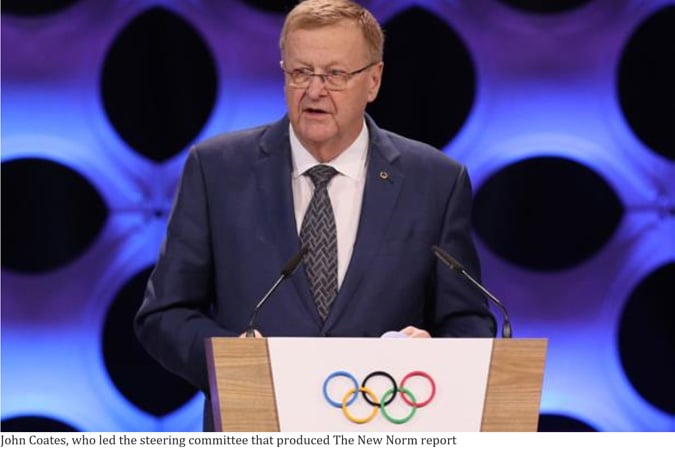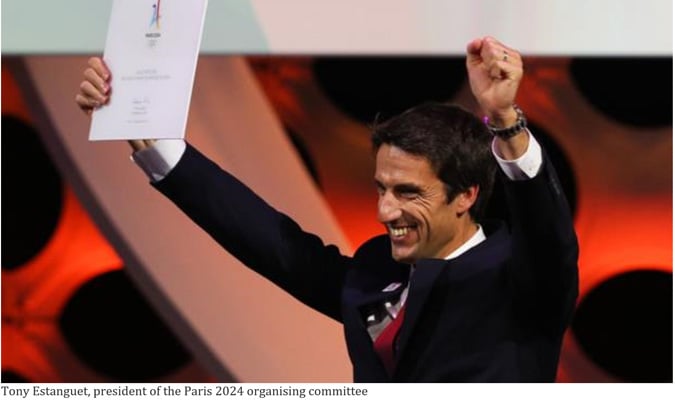Search the latest and greatest job opportunities in sport

The International Olympic Committee’s The New Norm, described as “an ambitious set of 118 reforms that reimagines how the Olympic Games are delivered.” It is the result of an increased and increasing perception that the returns no longer justify the investment involved in hosting an Olympic Games, the new reality is that the IOC and its stakeholders, including cities and international federations, have finally concluded that the games have no choice but to adapt (mainly by cutting costs) or die.
The IOC says that The New Norm, unveiled during PyeongChang 2018 winter Olympic Games, “will provide cities with increased flexibility in designing the Games to meet long-term development goals, and will ensure that host cities receive more assistance from the IOC and the wider Olympic Movement.”
Or, to put it another way, in the words of Christophe Dubi, the IOC’s executive director of the Olympic Games: “The games have to fit to the context, and not the context to the games – and that’s a fundamental change.”
Asked by Sportcal at a media round table in PyeongChang why the IOC had taken so long to adopt the apparently straightforward and common-sense cost-reduction measures contained in The New Norm, John Coates, the IOC’s former vice-president and chair of the co-ordination commission for the 2020 games in Tokyo, said: “We’ve always taken the view that the games was an opportunity for each city to put its mark on it, to put its design on it. I don’t think there was a great acceptance in the past by cities to take advice about what would happen before the games.
“But as the costs have increased they have had to accept it. In the past we’ve just gone along and allowed the city to design something special. We didn’t send messages across, but increasing costs have forced our hands on this.”

John Coates, who led the steering committee that produced The New Norm report
As for the international federations, Coates, who was heavily involved as president of the Australian Olympic Committee in Sydney’s hosting of the 2000 Olympics, said: “We used to, as an organising committee, have our own agreements with each international federation. Now there is a standard sport delivery agreement that will move from one games to the other, so we don’t have to negotiate as we had to in 2000.”
Importantly, Coates added “the international federations’ mindset has also changed. They’re not saying when a games goes to a new country, this is an opportunity for them to get another venue.” Citing the costs involved in creating venues for sliding sports at winter Olympics, he added: “They’ve also recognised with the sliding sports that you’ve got to maintain the venue and commit to having events afterwards, and there’s cost involved there.”
The New Norm is derived from six of the 40 recommendations contained in the IOC’s ground-breaking Olympic Agenda 2020 reform programme, as follows:
1. Shape the bidding process as an invitation
2. Evaluate bid cities by assessing key opportunities and risks
3. Reduce the cost of bidding
4. Include sustainability in all aspects of the Olympic Games
12. Reduce the cost and reinforce the flexibility of Olympic Games management
13. Maximise synergies with Olympic Movement stakeholders

The IOC claims that, having redesigned the Olympic Games candidature process and adopted a strategic approach to legacy, “hundreds of millions of dollars” will be saved in the delivery of the games. It cites “a joint coordination process between national and regional government, the IOC and Tokyo 2020 [which] has already assisted in reducing Tokyo’s revised venue budget by $2.2 billion.”
Thomas Bach, the IOC president, has said: “These are the biggest savings in the history of the Olympic Games. It is a fundamental rethinking of the organisation of future games. This will lead to a new norm – from the candidature for and the delivery of the games through to their legacy.”
So what form might these savings take? The IOC claims that “more than 80 of the 118 solutions that have been proposed would result in cost efficiencies without compromising the Olympic experience. The plan invites opportunities to reduce venue sizes, rethink transport options, optimise existing infrastructure and reuse the field of play for various sports.”
Coates cited a simple recalculation of acceptable waiting times for lifts in the Tokyo 2020 athletes’ village. By increasing this from 50 seconds to about 90 seconds, organisers were able to reduce the number of lifts required and save $80 million.

Tony Estanguet, president of the Paris 2024 organising committee (the first candidate and host city to experience fully the new approach), said: “It’s been a great opportunity to benefit from this new mindset. One of the reasons for the success of this bid was about engaging the stakeholders. In the past it became too big and for us it’s not sustainable any more. It had an impact on our vision and concept. A direct result was that we built our concept based on existing venues and temporary venues.”
Such venues will make up 95 per cent of those used at the 2024 games, Estanguet said, adding: “It’s because the IOC asked us why we wanted to build a venue, and if we didn’t have a strong reason and a strong benefit for the territory then the IOC was telling us not to go for a permanent venue and to choose an existing one or a temporary one. It helped us to save costs on the infrastructure budget.”
The New Norm foresees a ‘3+4’ approach to staffing organising committees which the IOC says “would streamline production and decrease human resource needs in the first three years – when engagement, planning and communication would be the primary focus – before shifting to detailed operational planning, readiness and delivery mode in the last four years.”
Estanguet said: “The IOC helped us to focus on the legacy and how the games will help us add value to develop sport activity. We will postpone our operations phase until late in the process, and we’re now starting to engage on the legacy plan, and our stakeholders will really work on a precise and strong legacy plan and start to implement it before the operations phase. This is quite new in the mindset and will be effective to engage people in the bid.”
Give your career a boost with the latest live vacancies in the sports industry , or create an account today and stay up to date with all the latest industry knowledge, events and jobs in sport.
Search the latest and greatest job opportunities in sport
One of the many key success factors when assessing the quality of degree programmes is the employability rate of its gra...
Read moreThe global major event industry is one of the most thrilling and impactful career paths you can choose. If you’re lookin...
Read moreStarting his career in New Zealand within sports events, Regan gained valuable experience with Hockey New Zealand and Ne...
Read more